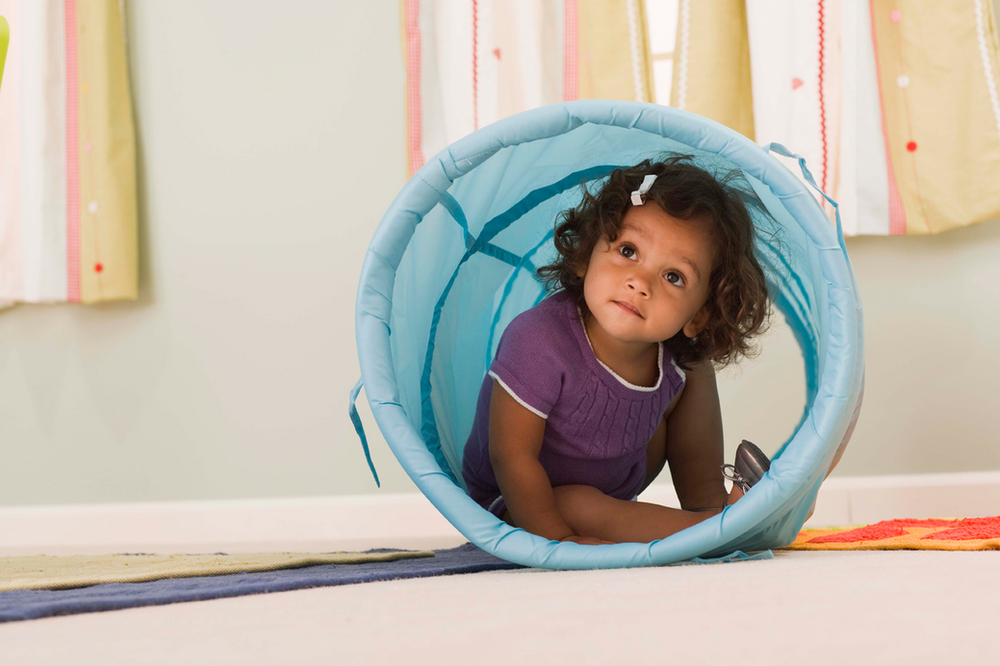
Imagine a nursery: the crib, the bright plastic toys, the sparkling mobile swinging above. Maybe there's a detailed mural painted on the wall. Maybe there's a changing table for adults to change diapers without bending too far over. Maybe there's a play-chair, to place your older infant or young toddler in, their feet dangling just close enough to the floor to push themselves around or spin their seat.
Now think about a Montessori classroom: neutral colors, with selected choices for children of beautiful, durable materials. Everything is at the child's level – even the smallest child – and the child is free to move about the room without relying on an adult to unbuckle or retrieve them. Like all Montessori classrooms, Montessori Infant-Toddler spaces reflect what we know about the children they serve. In this case, that means they allow for free movement to support the child's growing body and brain, reliable materials that teach the child about how the world works and their influence on it, and opportunities for independence to the degree their development allows.
So those floor beds aren't just there because they're pretty. We use floor beds because they allow children to self-regulate their sleep and to feel confident that, when they are awake, they can return to activity without waiting to be retrieved. Likewise, we offer the children sturdy, low chairs for sitting at equally low tables, from which they can push back when they are finished. We offer the children durable, often wooden materials that they can act upon, free from misleading lights or electronic sounds, because we want them to learn how the world they influence responds to that influence. We avoid bouncing chairs or infant spin-chairs because we want to support children moving between the activities that interest them, rather than spinning within a contraption within which they are buckled and stuck. We offer, instead, surfaces for crawling up and over and through, practicing gross and fine motor control as they learn about the world. Finally, we support children through standing diaper changes, allowing them to manage as much of the process as they can (even if it's a little less contained) so that they continue to follow the signals their bodies give them as they learn to regulate their own toilet needs.
Consider the same for your home. There's no need to invest in an expensive crib: a crib mattress on the floor in a simple frame is an elegant invitation to rest. Replace the large toy box with a few low shelves, accessible by the crawling child, and the toys with simple teethers, bells, books, animal figurines or puzzles. Hang a full-length mirror sideways on the wall, near to the floor, for your infant to admire themselves on their bellies or backs. Secure family photos or nature pictures down low as well, and avoid the bright murals. Install a banister low to the ground for your child to practice pulling up on, and for an extra place to hold during a standing diaper change. And those diaper changes? Ask your child's Infant or Toddler teacher to let you observe some. They're simpler (and cleaner) than you might imagine, and soon you'll wonder why you ever lay your child prone at all.
Foremost, your child's bedroom in infancy and toddlerdom should be a place that's inviting for soft experiences, warm time with a loving caregiver, a secure climate that feels quiet and calm- in other words, the way you want to feel as you're falling asleep: safe, peaceful and full of love.
#FirstPlane #Bedroom #Sleep #MontessoriAtHome #Toddlers #Infants #ForParents
